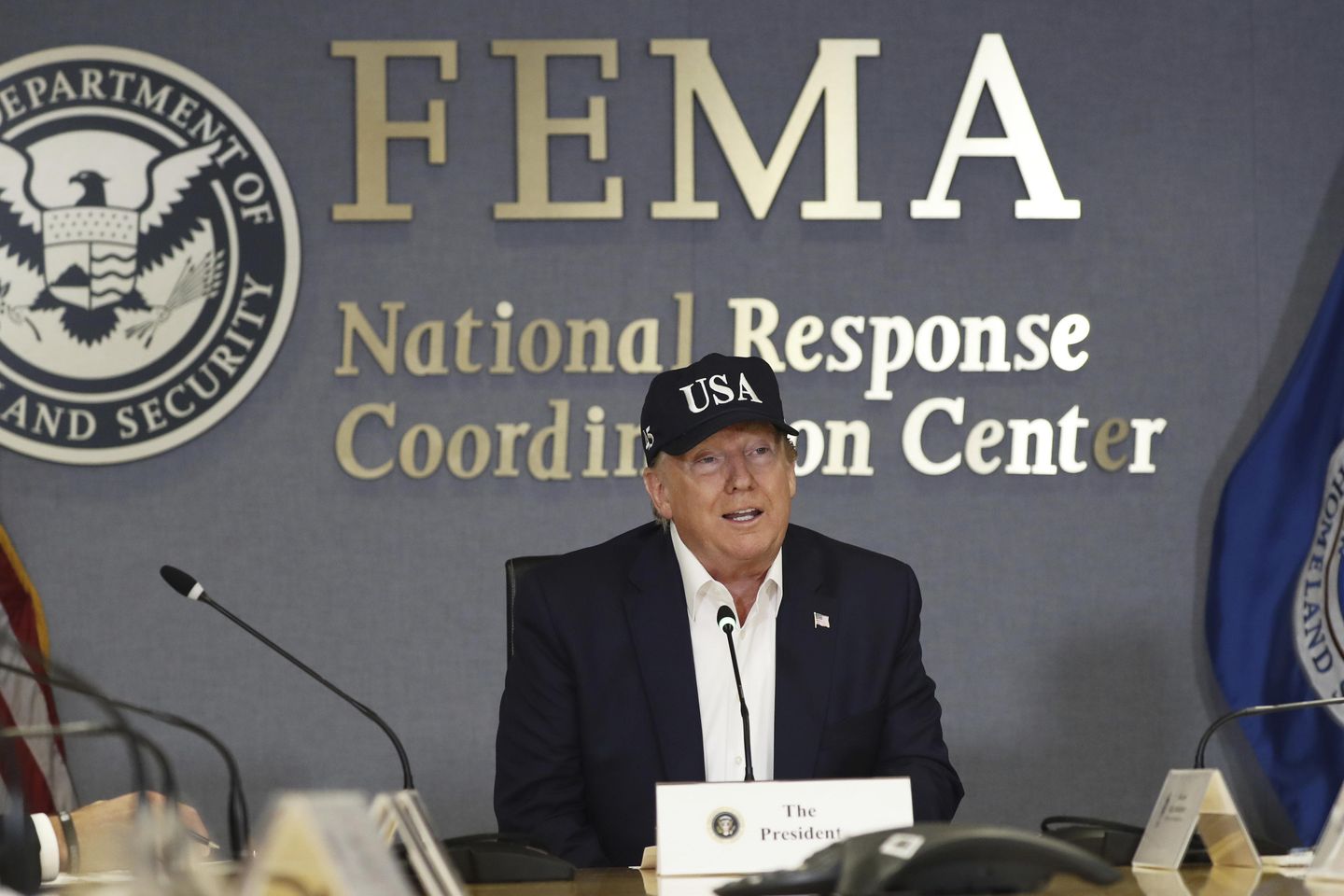
The leaders of the House Transportation and Infrastructure Committee want to overhaul the Federal Emergency Management Agency and streamline federal aid to states and individuals impacted by natural disasters.
They recently introduced a bill, the Fixing Emergency Management for Americans Act, that would redesignate FEMA as a Cabinet-level agency that reports directly to the president and make it easier for disaster victims to apply for and receive federal assistance.
The legislation would implement a faster, project-based grant system to give state and local governments money for rebuilding in advance, rather than making them pay the upfront costs and submit for reimbursement.
Individuals would be able to apply for FEMA assistance with a single form and could qualify for more housing assistance under changes in the bill.
President Trump has flirted with eliminating FEMA and said, at a minimum, the federal agency’s role in disaster response should be reduced to give states more power.
House Transportation Chairman Sam Graves, Missouri Republican, and ranking member Rick Larsen, Washington Democrat, teamed up on the bill, along with committee members Daniel Webster, Florida Republican, and Greg Stanton, Arizona Democrat.
“The purpose of the FEMA Act is to reform FEMA based on the real-life experiences of people in the country and what members of Congress are hearing from them,” Mr. Larsen said in an interview. “No one on the committee has expressed any interest at all in eliminating FEMA.”
Mr. Graves said in a statement that the legislation addresses complaints from state and local officials and disaster victims that the federal emergency management process “is too slow, complicated, and disconnected from the realities on the ground.”
“This bill does more than any recent reforms to cut through the bureaucracy, streamline programs, provide flexibility, and return FEMA to its core purpose of empowering the states to lead and coordinating the federal response when it’s needed,” he said.
Mr. Trump signed an executive order in January creating a FEMA review council to assess the agency’s performance over the last four years and compare it with state, local and private sector responses over the same period.
The council, co-chaired by Homeland Security Secretary Kristi Noem and Defense Secretary Pete Hegseth, must report its recommendations for improving FEMA by mid-November.
Mr. Larsen said the House Transportation Committee worked on FEMA overhaul bills in the last Congress but couldn’t get them over the finish line. They want to update the law this Congress and “don’t really have time to wait” for the review council’s recommendations, he said.
Committee leaders are getting feedback on the legislation and plan to hold a markup later this year. Mr. Larsen said he and Mr. Graves have kept party leaders apprised of their work and hope this bill, like other bipartisan measures their panel has approved, will earn enough broad bipartisan support for “an easy floor vote.”
FEMA was established in 1979 via an executive order from President Carter. It started as an independent agency but was placed under Homeland Security when that department was created in 2003.
The House bill removes FEMA from DHS, putting it back under the president’s direct control, and puts its focus back on natural disasters rather than human-made disasters like terrorist attacks.
Mr. Larsen said the shift will help FEMA focus on its three core responsibilities: helping communities build resiliency to mitigate the impact of natural disasters; providing immediate emergency response in a disaster; and assisting with longer-term recovery.
The bill reduces paperwork burdens for disaster survivors who apply for FEMA assistance. Instead of filling out multiple forms based on impact, individuals and businesses would “complete a single, streamlined application,” Mr. Larsen said.
The bill also requires FEMA to be more transparent about the process for disputing rejections.
“We saw this in North Carolina, where people were getting denial letters, but it wasn’t clear that they could, in fact, appeal those denial letters,” Mr. Larsen said. “And so FEMA will be required to provide more clear and more understandable notices.”
The bill also removes “disincentives that discourage donations from charities and religious organizations and the public,” he said.
The law currently says FEMA can’t duplicate assistance provided by another federal agency, state government or any other source.
The bill removes “other source,” which FEMA has broadly applied in rejecting applications. It was a particular issue after the Los Angeles wildfires, when FEMA considered GoFundMe campaigns a duplicative source of assistance.
Individuals could also qualify for more housing assistance under the bill.
FEMA is allowed to reimburse up to $42,500 for home repairs, but only for damage that makes the home “uninhabitable.” The interpretation of what is uninhabitable varies widely by FEMA inspector and often limits the amount of assistance homeowners can receive, so the legislation removes that word to provide more flexibility.
The bill makes it easier for state and local governments to rebuild public infrastructure after a disaster by allowing FEMA to provide funding upfront through project-based grants. States and localities currently foot the upfront costs and submit to FEMA for reimbursements, which can slow down rebuilding efforts if they have limited funds and have to spread project costs over multiple years.
“We still have projects open since [Hurricane] Katrina in 2005,” a Republican committee spokesperson said, noting the grant-based approach will speed up recovery.
There are more than 1,000 federal disaster declarations dating back to Hurricane Katrina that FEMA has not closed out under the current process, in which it has to validate 100% of the costs it is reimbursing. The bill sets up a task force to close out the backlog and change the requirement to 90%, which retains oversight over the funding but saves on the administrative costs of accounting for every penny.
The bill also overhauls the process for funding projects to build more resilient infrastructure to help mitigate damage during tornadoes, hurricanes, floods and other natural disasters.
Currently, states have to provide project plans to the federal government before they can receive funding.
“There are some members who want to block grant all of the money in pre-disaster mitigation to states and then let states use that money to plan ahead,” Mr. Larsen said. “Now we don’t need to go that far, but we can pre-fund some states that we know are going to have problems.”
The pre-funding is allocated to states as follows: 40% distributed equally; 20% based on vulnerability to natural hazards; 20% based on a combination of population size and median income; and 20% for economically distressed or rural areas.
The legislation also updates permitting requirements to exempt mitigation improvements added in the rebuilding process from an environmental review, so long as the project does not disturb new land. The current requirements have stalled efforts in Puerto Rico to rebuild more resilient infrastructure after Hurricanes Irma and Maria.

















